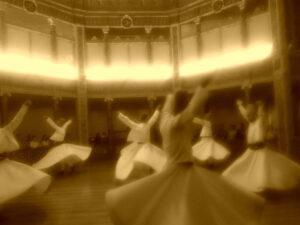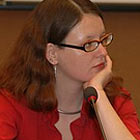Justice at last for the victims of Dutroux
Belgium's ‘trial of the century' has kicked off in the sleepy Walloon town of Arlon. After seemingly endless delays, notorious paedophile, rapist and suspected child killer Marc Dutroux is finally coming face-to-face with a jury.
Seven and a half years ago, in the middle of what would normally have been the news silly-season, Belgian police made a series of gruesome discoveries – in which three pairs of girls were the unfortunate victims – that have haunted the country ever since. Since that fateful summer of 1996, An and Eefje, Julie and Mélissa, and Sabine and Laetitia have tragically become household names in Belgium.
It all started on 13 August 1996 when repeated sex offender and common crook Marc Dutroux was arrested – along with his wife Michelle Martin and heroin-addicted accomplice Michel Lelièvre – on suspicion of having kidnapped Laetitia Delhez just four days earlier. Soon after, Michel Nihoul, a shady businessman with political connections, was also arrested for his suspected involvement in the case.
A couple of days after his arrest, two miserable girls, Laetitia and Sabine Dardenne – kidnapped on 28 May 1996 – were freed from a cage in Dutroux's cellar in Marcinelle, near Charleroi in Wallonia. A shaken Sabine repeatedly said, “I'm going to see mother again.”
Tragically, worse horrors were to follow. Two days later, police investigators found the starved bodies of Julie Lejeune and Mélissa Russo, who disappeared on 24 June 1995, in a deep hole in the garden of Dutroux's Sars-la-Bussière house. Their bodies were just above the remains of another member of the Dutroux gang, Bernard Weinstein, who was buried alive after having been tortured by Dutroux, probably in a disagreement over money. On 3 September, two more bodies were found in a pit behind Lelièvre's bungalow in Jumet. This time, they were the underfed An and Eefje, who were intercepted by Dutroux while hitchhiking after a late hypnosis show. By this point, people began to fear that these macabre findings would not be the last.
Secret networks
As a possible explanation for apparent police failure and incompetence, allegations soon began flying in some sections of Belgian public opinion about a gigantic paedophilia network that even penetrated some of the highest echelons of government. This was all succinctly summed up early in the investigation when the public prosecutor in charge, Michel Bourlet, one of the driving forces behind the investigation, said that he planned to get to the core of what really happened, “if they let me”.
Soon after, the other dynamo behind the investigation, Jean-Marc Connerotte, Neufchateau's chief investigator, was taken off the case after attending a spaghetti party for Sabine and Laetitia. Rather than spark off a witch-hunt, the parents of the dead girls called for a dignified response. The White March – in which everybody wore something white or carried a white balloon – drew 300,000 people to Brussels on 29 October 1996, in one of the biggest displays of public protest of the 20th century in Belgium.
The day after the march, the government decided to create a commission to look into the way the investigations into the Dutroux case were handled. It uncovered a series of missed opportunities and incompetence that has since led to the complete reform of the justice and police systems, and the introduction of better support mechanisms – such as Child Focus – for victims of such crimes and their families.
Over the years, the conspiracy theories have not gone away. Every so often, a witness emerges. One example was the mysterious X1, aka Regina Loef, who claimed that she and other missing girls were earlier victims of a large network involving Dutroux. After a long struggle between believers and non-believers, it was agreed not to include the network theories – which were the main factors slowing down the investigation – so that the trial could start.
As a first step, the Attorney-General decided that four defendants, Dutroux, Martin, Lelièvre and Nihoul, would have to appear before a jury.
Judgement day
Nearly eight years later, Dutroux still haunts Belgium. “It still casts a shadow over [Belgium]. How can something like that happen in our society? People are still asking, is there something else behind it?” Herman Van Rompuy, vice-premier at the time of Dutroux's arrest, was quoted as saying. In a trial predicted to last anywhere between two and four months, the jury will wrestle with 440,000 pages of written documents, hear some 450 witnesses and be presented with countless other pieces of evidence. The trial raises many questions.
First and foremost, will it be possible to give Dutroux a fair hearing? Most analysts now seem to believe the answer is yes. They say the authorities have investigated the allegations brought before the court thoroughly and their fear that Dutroux may get off on a procedural error has ensured that they will rely only on the facts. Realism is the order of the day for Dutroux's defence too. As his lead lawyer, Xavier Magnee, put it in a recent interview: “I don't have any illusion. If I ask the jury whether my client is guilty, 24 arms would go up in the air. The only thing I expect is that I can ask the questions I wrestle with as a citizen of this country.” The process that has taken nearly eight years is not over yet.
Hopefully, the trial will put an end to speculation and lay the rumours to rest. The success of the proceedings will depend on all parties involved. Not only must this trail deliver justice it must also be seen to do so. Once the quest for answers, justice and the truth behind this sordid affair has ended, then the true mourning for the families of the victims can begin. Over the next few months, Belgium will seek to banish the Dutroux demon forever. The mayor of Arlon recently summed up his feelings on this question. “We have planned a funfair just behind the Justice Palace in July. You could see this as a symbolic exorcism of the Devil,” he said.
________
This article first appeared on Expatica on 1 March 2004.


